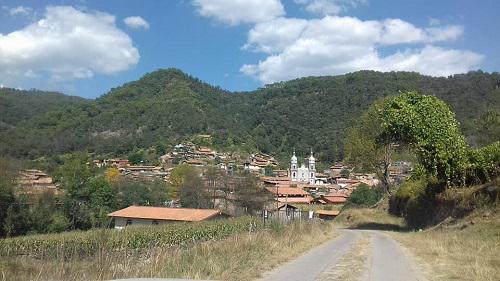Oscar Alberto Maldonado Ibarra
Problems in the protection of natural resources is the limited participation of local populations in the decision-making for the establishment of official decrees about natural resources. This affects the inhabitants social and cultural aspects which have not been considered with the same importance as natural diversity. This project document how stakeholders participate in conservation issues linked to nature and culture for traditional and recreational activities. Identifying local participation in conservation will allow the detection of the most lagging local groups in making decisions. The results will contribute to the consolidation of the Biocultural Landscape and improvement the conservation practices.

Landscape of Talpa de Allende Town.
The project of "Biocultural landscape" It is located in region “Western Sierra of Jalisco”, Mexico. It is an area of 245,000 hectares proposed for conservation distributed in four municipalities. It is a mountainous and forested area with species of pine, oak, and tepehuaje; There are mining resources like gold, silver and mercury, and forest exploitation is carried out. Living protected species as such as jaguar and macaw, is considered an importantly hydrological zone.

Navidad town, in Mascota, Jalisco
The municipalities are: San Sebastián del Oeste: Named "Magic Town" (Decree assigned by the Ministry of Tourism of Mexico to municipalities with historical importance), it has 95 communities and 5,755 inhabitants. Its economy is based on agriculture, livestock, mining and nature and cultural tourism activities. Mascota: Named “Magic Town”, it has 157 communities and 14,477 habitants. Its main activities are based on agriculture, livestock, commerce and nature tourism. Talpa de Allende: Named Magic Town, it has 159 towns and 15,126 inhabitants. Its activities are based on agriculture, livestock, commerce and services, as well as the activities of nature tourism and religious tourism. Atenguillo: It has a population of 3,899 inhabitants, Its economy is based on agriculture, livestock, forestry, mining, commerce and tourism services to a lesser extent. Among the problems that arise with conservation models, local populations have a reduced participation when new protected natural areas are decreed. Now, with an existing proposal for a protected natural area called “Biocultural Landscape”, local groups have been integrated into different working groups and with different strategies, considering the importance of the region for rural and recreational activities. It is necessary to identify the measures that have been implemented so far and know the local dynamics in conservation, participation, recreation and characterization of a territory that seeks a different conservation model, how Biocultural Landscape polygon in the Western Sierra de Jalisco. By identifying these measures, it will be possible to know what the participation of the local communities is and which profiles and groups are the ones that most benefit the conservation of the region. It will also be possible to determine the impact of the decrees of the protected natural area, considering that they depend on nature for their economic subsistence and maintain their sociocultural activities. it will be possible to know the sites of greatest impact to apply and propose strategies that mitigate the wear of recreation activities.